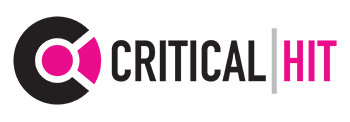When you’re creating a printed booklet, you’ve already put time, effort, and creative energy into crafting great content and polished design. But if you don’t choose the right binding method, all of that work can be undermined in an instant. Binding isn’t just about keeping the pages together — it plays a major role in how your booklet feels, functions, and ultimately, how it’s perceived.
So how do you choose the best booklet binding option? It depends on a few key factors:
- How thick your booklet is
- How it will be used
- Your budget
- The impression you want it to make
Let’s walk through the most common types of booklet binding and explore how to choose the right one for your specific project.
Saddle-Stitch Binding
If your booklet is under 80 pages and you want something sleek and professional without breaking the bank, saddle-stitch might be your best bet. This method involves folding printed sheets and stapling them through the crease in the spine. It’s a clean, flat finish that works well for smaller booklets, brochures, event programs, catalogs, and newsletters.
The biggest advantage? It’s cost-effective and quick to produce. You can even order in smaller quantities without significant setup costs. However, it’s not ideal for thicker booklets, since too many pages will cause it to puff out and not lay flat.
Saddle-stitching says you’re serious, but are still budget-conscious. If you want something fast, lightweight, and easy to distribute, this is your go-to option.
Perfect Binding
When your booklet starts to bulk up — typically over 40 pages — perfect binding steps in as a more polished solution. This is the same type of binding you’ll find on paperback books. The pages are glued together at the spine and given a crisp, squared-off edge.
Perfect binding offers a higher-end look and feel. It’s great for product catalogs, lookbooks, annual reports, and anything else where you want to make a strong visual impression. You also get a printable spine, which can be a branding opportunity all on its own.
The trade-off is price and flexibility. It’s more expensive than saddle-stitch and isn’t ideal for small print runs. Plus, it doesn’t lay flat, so if that’s important for usability, you might want to consider another option.
Spiral Binding
For booklets that are going to be used frequently, referenced often, or written in — think training manuals, instruction booklets, or planners — spiral binding is a winner.
This method involves punching holes along one edge and inserting a plastic coil that lets the booklet lie completely flat. You can fold it back on itself, which is super handy for hands-on use.
Spiral binding is also relatively affordable and available in a wide range of colors, so it’s easy to match your branding. Just keep in mind that the coils are a bit bulky and not as refined in appearance as some of the other binding options.
Wire-O Binding
If you like the practicality of spiral binding but want something a little more polished, wire-o is your next step up. Similar in concept to spiral binding, wire-o uses a double-loop wire that’s inserted through holes in the edge of the booklet.
It also allows the pages to lay flat and turn easily, but it has a more upscale look — ideal for presentations, corporate materials, calendars, and upscale workbooks.
The wire-o spine adds a touch of sophistication while still providing functionality. However, it’s a bit more delicate than plastic spiral coils, so it may not hold up as well under rough handling.
Choosing the Right Binding for Your Project
There’s no one-size-fits-all when it comes to booklet binding. You have to consider the nature of the content, how it’s going to be used, and how you want people to feel when they interact with it.
Here are a few guiding questions to help you make the right call:
- How many pages does your booklet have?
- Will it be reused regularly, or is it a one-time handout?
- Do you need the pages to lay flat?
- What impression are you trying to make?
- What’s your budget?
Work With a Reputable Printing Provider
Even if you choose the “right” binding type, poor execution can really ruin the effect. That’s why you have to work with the right printing provider.
A good online booklet printer (see printingcenterusa.com) will guide you through the technical aspects — helping you understand things like paper weight, trim sizes, margins, and file preparation. More importantly, they’ll ensure your chosen binding holds up well and reflects the quality of your brand.
If you’re working on a tight deadline or need help with design, choose a provider that offers in-house support. And if you’re printing in bulk, make sure they have the production capacity to meet your needs without delays.
Binding it All Up
It’s easy to get caught up in writing the perfect copy or selecting eye-catching images, but don’t let the binding be an afterthought. It frames your content and affects how people interact with your message. It’s also one of the first physical cues they’ll notice about your brand’s professionalism.
Whether you choose saddle-stitch, perfect binding, spiral, or wire-o, let your goals drive the decision. Once you’ve made your pick, make sure you work with a reliable printing provider who knows how to bring it all together.























